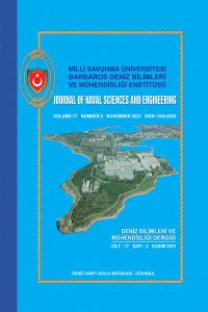EGZOZ GAZI GERİ VERİLMESİ YÖNTEMİNİN BİR BUJİ İLE ATEŞLEMELİ MOTORUN EMİSYON DEĞERLERİ VE PERFORMANSI ÜZERİNE ETKİLERİ
Çağdaş buji ile ateşlemeli motorların geliştirilmesi ve üretimi, düşük maliyet, düşük yakıt tüketimi ile yüksek performanslı motorlar ve azaltılmış kirletici emisyonları talep eden pazar ve mevzuat gereksinimleri için çok önemlidir. Bu parametreler buji ile ateşlemeli bir motor silindiri içindeki yanma işlemi ile doğrudan ilişkili olduğu için, buji ile ateşlemeli bir motor silindiri içerisindeki yanma verimini ve kirletici emisyonlarını etkileyen bu parametrelerin tanımlamasını yapan birçok araştırma başarıyla yapılmıştır. Yapılan bu çalışmada, bir termodinamik çevrim modeli geliştirilerek, egzoz gazındaki azot oksit (NO) yüzdesini azaltmak amacı ile kullanılan Egzoz Gazı Geri Verilmesi Yönteminin buji ile ateşlemeli bir motorun egzoz emisyon değerleri ve performansı üzerine etkilerini tahmin etmek için kullanılmıştır. Kurulan model, buji ile ateşlemeli bir motorun tüm termodinamik çevrimini yansıtmakta ve motor silindiri içindeki yanma olayını, ısı transferini, gaz değişimini, yanma ürünlerinin ısıl ayrışmasını ve kimyasal dengeyi içermektedir.
Anahtar Kelimeler:
Çevrim Modeli, Buji ile Ateşlemeli Motor, Egzoz Gazı Geri Verilmesi, Azot Oksit, Emisyon
THE EFFECTS OF EXHAUST GAS RECIRCULATION ON EMISSIONS AND PERFORMANCE OF A SPARK IGNITION ENGINE
The development and production of modern spark-ignition engines are very important to market and regulations requirements which demand low cost, high-performance engines with low fuel consumption and reduced emissions of pollutant. Because these parameters are directly related to the combustion process in an engine cylinder, many kinds of research have been achieved to identify these parameters which affect combustion efficiency and pollutant formation in this engine cylinder. In this study, a thermodynamic cycle model has been developed and used to predict the effects of Exhaust Gas Recirculation (EGR), which is used to reduce the Nitrogen Oxide (NO) in exhaust gas, on emission levels and performance of a spark-ignition engine. The model simulates full thermodynamic cycle of a spark-ignition engine and includes heat transfer, combustion, gas exchange process, thermal dissociation of water and carbon dioxide, and chemical equilibrium in engine cylinder.
___
- [1] Benson, R. S., & Whitehouse, N. D. (1979). Internal Combustion Engines. New York: McGraw-Hill.
- [2] Barton, R. K., Lestz, S. S., & Meyer, W. E. (1971). An Empirical Model for Calculating Cycle-by-Cycle Gas Motion and Combustion Variations of a Spark Ignition Engine. Society of Automotive Engineers. SAE Paper No. 710163.
- [3] Blumberg, P., & Kummer, J. T. (1971). Prediction of NO in Spark- Ignition Engines-An Analysis of Methods of Control. Combustion Science and Technology, 4, 73-95.
- [4] Heywood, J. B. (1975). Pollutant Formation and Control in Spark- Ignition Engines. Fifteenth Symposium on Combustion, The Combustion Institute, Pittsburgh.
- [5] Samaga, B. S., & Murthy, B. S. (1975). On the Problem of Predicting Burning Rates in a Spark Ignition Engine. Society of Automotive Engineers. SAE Paper No. 750688.
- [6] Tabaczynski, R. J., Ferguson, C. R., & Radhakrishnan, K., (1977). A Turbulent Entrainment Model for Spark Ignition Engine Combustion. Society of Automotive Engineers, SAE Paper No. 770647.
- [7] Health effects of transport-related air pollution - edited by Michal Krzyzanowski, World Health Organization 2005.
- [8] Heywood, J. B. (1988). Internal Combustion Engine Fundamentals. New York: McGraw-Hill.
- [9] Turns, S. R. (1996). An Introduction to Combustion. New York: McGraw-Hill.
- [10] Çengel, Y. A., & Boles, M. A. (1988). Thermodynamics: An Engineering Approach. New York: McGraw-Hill.
- [11] Vibe, I. I. (1970). Brennverlauf und Kreisprozess von Verbrennungsmotoren. Berlin: VEB Verlag Technik.
- [12] Annand, W. J. D. (1963). Heat Transfer in the Cylinder of Reciprocating Internal Combustion Engines. Proceedings of the Institution of Mechanical Engineers, 177, 973-990.
- [13] Hanson, R. K., & Salimian, S. (1984). Combustion Chemistry. W. C. Gardiner, Jr.(ed.). Survey of Rate Constants in the N-H-O System.
- [14] Öğüçlü, Ö. (1998). Thermodynamic Model of the Cycle of Spark Ignition Engine. Msc Thesis, Graduate School of Natural And Applied Sciences of Dokuz Eylul University, İzmir.
- [15] Warnatz, J., Maas, U., & Dibble, R. W. (1996). Combustion. Berlin: Springer Verlag.
- [16] Bowman, C. T. (1992). Control of Combustion-Generated Nitrogen Oxide Emissions: Technology Driven by Regulations. Twenty- Fourth Symposium on Combustion, The Combustion Institute. Pittsburgh.
- [17] Flagan, R. C., & Seinfield, J. H. (1988). Fundamentals of Air Pollution Engineering. New Jersey: Prentice-Hall.
- [18] Taylor, C. F. (1985). The Internal-Combustion Engine in Theory and Practise. Volume І: Thermodynamics, Fluid Flow, Performance. (2nd ed.). London: The M.I.T. Press.
- [19] Ganesan, V. (1996). Internal Combustion Engines. New York: McGraw-Hill.
- [20] Borman, G. L., & Ragland, K. W. (1998). Combustion Engineering. New York: McGraw-Hill.
- ISSN: 1304-2025
- Yayın Aralığı: 2
- Başlangıç: 2003
- Yayıncı: Milli Savunma Üniversitesi Deniz Harp Okulu Dekanlığı
